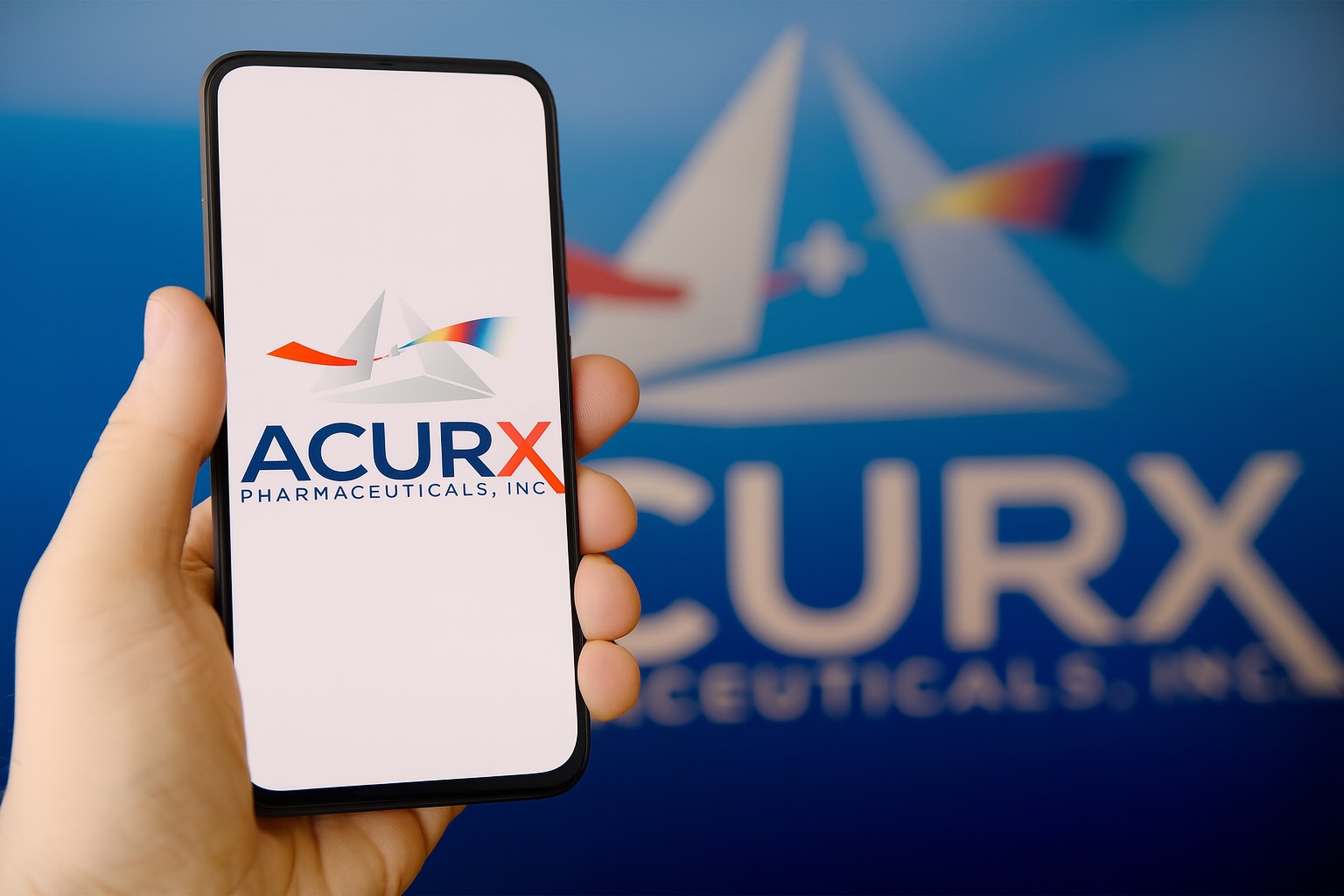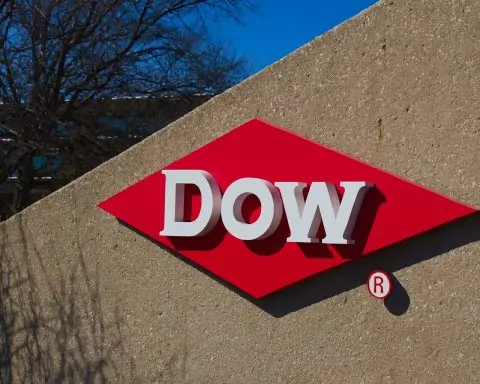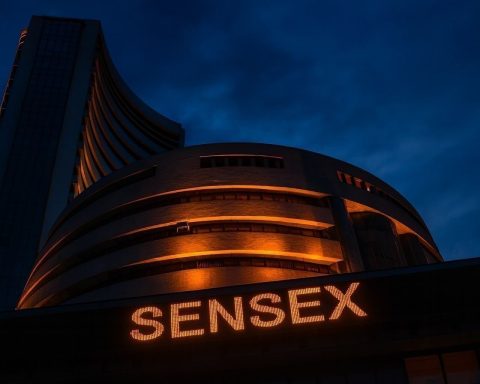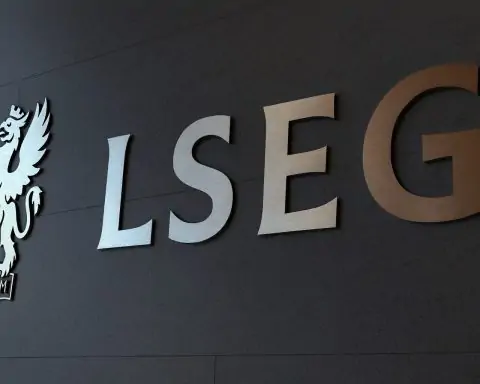- Stock Price Collapse: Acurx Pharmaceuticals (NASDAQ: ACXP) trades around $4.3 per share (post-reverse-split) as of early October 2025 – down roughly 90% from its 52-week high of $44 [1]. The company executed a 1-for-20 reverse stock split in August to regain Nasdaq listing compliance [2].
- Recent Rally on EMA News: Shares ticked up in late September after the European Medicines Agency (EMA)gave a positive opinion on Acurx’s Pediatric Investigation Plan (PIP) for its lead antibiotic, ibezapolstat [3]. This regulatory green light is a key step toward Phase 3 trials and future European approval.
- Analysts See Huge Upside: Despite the stock’s collapse, Wall Street remains extraordinarily bullish. H.C. Wainwright reiterated a Buy rating with a $31 price target, versus ~$4 current – and analyst targets range from $20 up to $165.80 [4]. The average 12-month target (~$30–$60) implies +500% to +1300% upside if Acurx delivers on its drug pipeline.
- Clinical-Stage Antibiotic Developer: Acurx is a late-stage biotech developing a new class of narrow-spectrum antibiotics for tough infections. Its lead candidate ibezapolstat (for C. difficile infections) is Phase 3–ready with FDA Fast Track and QIDP designations. Acurx’s preclinical pipeline (e.g. ACX-375C) targets other Gram-positive pathogens like MRSA, VRE, and even anthrax [5] [6].
- Financials & Cash Runway: The company is pre-revenue and reported a net loss of ~$2.2M in Q2 2025. It ended Q2 with $6.1 million in cash on hand [7] after small financings, enough for near-term operations but additional funding will be needed to launch costly Phase 3 trials. In Q3, shareholders approved increasing authorized shares to 250 million, signaling potential future equity raises [8].
- Investor Outreach & Alerts: To drum up investor interest, Acurx renewed a media partnership with New to The Street, featuring televised CEO interviews, national TV commercials, and online campaigns to spotlight Acurx’s story [9] [10]. The company also announced it regained full Nasdaq compliance in September (meeting minimum price and equity requirements) – critical to maintain its listing [11].
Current News & October 2025 Updates
EMA Positive Opinion: A major recent catalyst for Acurx came on September 30, 2025, when the EMA’s Paediatric Committee issued a positive opinion on the Pediatric Investigation Plan (PIP) for Acurx’s lead drug, ibezapolstat, in Clostridioides difficile infection [12]. This essentially means European regulators agree with Acurx’s plan to study ibezapolstat in children, a prerequisite for future marketing approval in Europe. As the company noted, the PIP approval “ensur[es] necessary data are obtained to support the drug’s authorization and use in pediatric populations.” [13] This news helped lift ACXP stock from about $4.18 to $4.60 at the end of that week [14], reflecting investor optimism about Acurx’s regulatory momentum.
Regained Nasdaq Compliance: In early October, Acurx confirmed it had regained full compliance with Nasdaq’s listing rules after its reverse split and financial moves. The company now meets both the minimum $1.00 bid price and shareholders’ equity requirements, so its stock will remain listed on the Nasdaq Capital Market [15]. This removes an overhang of delisting risk that had been pressuring the stock. Acurx’s Board had pushed through a 1-for-20 reverse split effective August 5, 2025 specifically to boost the share price above $1 [16]. The split shrank outstanding shares from ~30.7 million to ~1.54 million [17] and lifted the stock from mere pennies to a few dollars overnight. While such reverse splits often signal distress, in Acurx’s case it successfully preserved the Nasdaq listing – a key positive for investor confidence.
Share Authorization Increase: Additionally, shareholders approved an increase in authorized common shares from 200 million to 250 million (post-split) at a special meeting [18]. This move, along with an equity line of creditestablished with Lincoln Park Capital for up to $12 million [19] [20], positions Acurx to raise capital as needed. Investors should note this could lead to future dilution if/when the company issues new shares to fund its Phase 3 trials. Acurx’s management has explicitly adopted a “multi-step approach” to financing – combining traditional offerings, warrant inducement deals, and potential public-private partnerships – to secure the funding required [21].
Media & Investor Outreach: On the publicity front, Acurx has been actively courting investors and visibility. In April 2025 the company renewed a 6-month media campaign with New to The Street, a financial news TV program, and in September it extended this partnership [22]. The expanded agreement includes long-form interviews airing on Fox Business and Bloomberg TV, over 300 national TV commercials, and “accredited investor” conference events to showcase Acurx [23] [24]. “We’re excited to expand our media footprint… [New to The Street’s] platform helps us communicate our mission to bring novel, life-saving antibiotics to market to millions,” said Acurx CEO David Luci [25]. This aggressive outreach is somewhat unusual for a biotech of Acurx’s size, and indicates the company’s urgency in attracting investor interest (likely ahead of major trial milestones and fundraising).
Q3 Developments Outlook: As of October 8, 2025, no new material events have been reported beyond the EMA pediatric plan news. Investors are now looking ahead to Phase 3 trial initiation for ibezapolstat. Acurx has indicated it is “well positioned to commence [the] international Phase 3 program” for ibezapolstat, with plans for two global trials vs. standard-of-care vancomycin [26] [27]. The exact start timing depends on securing sufficient financing. Any announcements of partnerships, grant funding (e.g. CARB-X or BARDA for antibiotics), or a capital raise will be closely watched as potential catalysts or risks in late 2025.
Stock Price & Recent Movement
Acurx’s share price tells a tale of extreme volatility and risk. After going public in mid-2021, ACXP traded in the $20–$40 range (split-adjusted) for a time, but 2022–2024 saw a severe slide. The stock hit a 52-week high of $44 in October 2024 but then collapsed to a low of ~$3.80 by August 2025 [28]. This ~90% nosedive was driven by a mix of dilution, financing worries, and lack of near-term revenue as the company’s antibiotic program advanced slowly.
Following the Aug 2025 reverse split, ACXP shares fluctuated mostly between $4 and $5. In late September, the EMA news gave a short-lived boost – closing $4.60 on Oct 1, 2025 [29] – though profit-taking and market volatility saw it drift back to ~$4.3 by Oct 8. Trading volume is relatively low (often only 30–100K shares per day [30]), reflecting its micro-cap status. This means the stock can swing sharply on any news or trading imbalances. For example, on some days in Q3 the stock moved 10–20% intraday on no news, a reminder of its high volatility (recent 11% weekly volatility, higher than 75% of U.S. stocks [31]).
It’s important to note that Acurx’s market capitalization is only around $6–7 million at the current share price [32]. Such a low valuation partly prices in the significant risks (discussed below) but also means even small absolute changes in price equal large percentage moves. For context, at ~$4.30 per share, the entire company’s market cap is less than the cost of running a Phase 3 trial – an indicator of market skepticism. On the flip side, this tiny float sets the stage for outsized gains if Acurx delivers positive outcomes. The stock’s year-to-date total return lags far behind the S&P 500 (which is up ~12% YTD) after ACXP’s decline [33], but any clinical breakthroughs could quickly reverse that trend.
Investors should be prepared for continued high volatility. The stock’s 52-week range is $3.80 – $44.00 [34], and even after the reverse split, ACXP remains a “penny stock” in disguise. Only risk-tolerant investors should consider small biotech stocks like Acurx, and even then, position sizing and diversification are key due to the binary nature of drug trial outcomes.
(For a visualization, the chart below shows ACXP’s dramatic price drop over the past year, then stabilizing around the $4 level after the August 2025 reverse split.)
Figure: ACXP share price over the past 12 months (adjusted for 1:20 split), highlighting the steep decline from late 2024 into 2025 and recent stabilization. Source: INDmoney/Company IR data. [35] [36]
Analyst Forecasts and Expert Analysis
Despite Acurx’s challenges, the few analysts covering the stock are incredibly bullish – arguably reflecting the huge opportunity if ibezapolstat succeeds, as well as the low base valuation. According to TipRanks, two Wall Street analystshave published targets in the past 3 months with an average price target of $30.50 (range $30 to $31) – representing +570% upside from the ~$4.55 share price in early October [37]. The consensus rating is a “Moderate Buy / Strong Buy” [38]. Similarly, H.C. Wainwright & Co. (Acurx’s most active analyst) reiterated its Buy rating on October 1, 2025, citing the positive EMA news. H.C.W. maintains a $31 target for ACXP and emphasized this is a “significant upside from the current price of $4.29” [39]. In fact, investing.com data shows analyst targets ranging from $20 on the low end to a stunning $165.80 on the high end [40]. Even the low-end $20 target implies nearly a 5× increase, while the high end suggests a speculative scenario of ~40× upside. Such sky-high targets indicate that if Acurx’s Phase 3 trial succeeds and its antibiotic reaches the market, the company’s value could dramatically rerate closer to peers (i.e. hundreds of millions in market cap).
Why are analysts so optimistic? A key reason is the unmet medical need and market potential for a new C. difficileantibiotic. C. difficile infections (CDI) cause ~500,000 illnesses and tens of thousands of deaths annually (per CDC) and are classified as an “urgent threat” due to rising antibiotic resistance [41]. Vancomycin and fidaxomicin are current treatments, but recurrence rates are high and new mechanisms are needed. Ibezapolstat’s novel targeting of bacterial DNA polymerase IIIC could make it a first-in-class treatment for CDI. Furthermore, ibezapolstat’s narrow-spectrum profile aims to kill C. diff while sparing healthy gut bacteria [42] [43], potentially reducing the collateral damage that leads to recurrent infections. This differentiated profile suggests that if Phase 3 confirms safety/efficacy, ibezapolstat could capture significant usage, especially as antibiotic stewardship programs favor narrow-spectrum agents.
Analysts also point to Acurx’s regulatory designations that could accelerate or enhance the drug’s value: the FDA granted ibezapolstat Fast Track status and Qualified Infectious Disease Product (QIDP) designation (which confers 5 extra years of market exclusivity if approved) [44]. These are strong signals about the drug’s importance. The recent EMA feedback (Scientific Advice and PIP approval) means both U.S. and European regulators are essentially on the same page regarding Acurx’s Phase 3 plans [45] [46]. This de-risks the clinical program to some extent, as Acurx has clarity on trial design and endpoints needed for approval.
However, it’s worth noting a disconnect: while analysts issue high targets, the market’s actual sentiment is cautious – evidenced by the low $6M valuation. This likely reflects concerns that analysts themselves acknowledge in fine print: financing risk and execution risk. Acurx’s cash is limited, and raising significant capital (say $20–$30M or more) could dilute current shareholders heavily, which isn’t always fully baked into price targets. Additionally, until Phase 3 data arrives (likely 2026 at earliest), the stock could remain subdued.
Expert investor commentary tends to be mixed. Some biotech commentators note that antibiotic developers face a notoriously tough market – even an approved drug can struggle commercially without government support, as new antibiotics are often held in reserve (to avoid resistance) and not big money-makers. For instance, the collapse or sale of peers like Paratek Pharmaceuticals (maker of Nuzyra) and Melinta have made investors skeptical of small antibiotic biotechs. This likely contributes to Acurx’s low valuation. Bulls counter that C. difficile is a high-value niche (hospitals desperately need better CDI therapies), and Acurx’s small size could actually make it an attractive takeover target if Phase 3 succeeds. The recent $8.0B acquisition of Merus (for an antibody, not an antibiotic) shows big pharma will pay up for needed therapeutics [47] – though antibiotics have historically seen fewer big buyouts.
In summary, analysts “strongly buy” ACXP for its high reward potential, but the market is in “wait-and-see” mode. Investors should carefully weigh the 1000% upside scenarios vs. the very real possibility of further dilution or setbacks. Independent biotech reviewers advise that Acurx’s stock is essentially an all-or-nothing bet on ibezapolstat’s Phase 3. Any positive interim data or partnerships could ignite the stock, while a trial failure would be devastating. Thus, while ACXP offers a speculative opportunity, it is not for the faint of heart.
Business Overview & Clinical Pipeline
Acurx Pharmaceuticals is a clinical-stage biopharmaceutical company founded in 2017 and headquartered in Staten Island, NY, focused on developing novel antibiotics for difficult-to-treat bacterial infections [48] [49]. Unlike broad-spectrum antibiotics that wipe out good and bad bacteria alike, Acurx is pioneering a Gram-Positive Selective Spectrum (GPSS®) approach [50]. All of its drug candidates work by blocking the bacterial enzyme DNA polymerase IIIC (pol IIIC), an enzyme found in many Gram-positive pathogens but not in Gram-negative bacteria [51] [52]. In theory, this yields antibiotics that kill targeted superbugs (like C. diff or MRSA) without harming the beneficial flora in our bodies.
The company’s pipeline is outlined below:
| Drug Candidate | Target Indication | Stage | Notes/Status |
|---|---|---|---|
| Ibezapolstat | C. difficileInfection (CDI) – initial treatment | Phase 3–ready | Oral small-molecule antibiotic. Novel pol IIIC inhibitor. Successfully completed Phase 2b; received FDA Fast Track and QIDP designations [53]. International Phase 3 trials planned (2 studies vs. vancomycin) pending funding [54] [55]. Pediatric study plan approved by EMA [56]. |
| ACX-375C(GPSS class) | Gram-positive infections: MRSA, VRE, DRSP, Anthrax | Preclinical (Lead) | New GPSS antibiotic for drug-resistant skin and bloodstream infections(ABSSSI, etc.) [57]. Indian patent granted (expires 2039) [58]. Also eyed for inhaled anthrax treatment in biodefense [59]. Advanced lead optimization; poised for IND-enabling studies. |
| Other GPSS pipeline | Additional DNA pol IIIC inhibitor variants | Discovery | Acurx is exploring other analogues/backup compounds targeting Gram-positive “superbugs.” The focus is on oral formulations that address unmet needs in serious infections. Publications and mechanistic studies (e.g. with Leiden University) are ongoing [60] [61]. |
Table: Acurx Pharmaceuticals Pipeline – Lead drug ibezapolstat for C. diff is approaching Phase 3. ACX-375C is a follow-on preclinical candidate targeting MRSA and other resistant bacteria, with a long patent life and potential anthrax application. GPSS = Gram-Positive Selective Spectrum.
Ibezapolstat – the crown jewel of Acurx’s pipeline – completed a Phase 2 trial in 2021–22, demonstrating promising clinical cure rates for C. difficile infection with what Acurx called a “sparing” effect on the gut microbiome. Notably, the Phase 2b results were published in The Lancet Microbe in June 2025 [62], a respected peer-reviewed journal, which adds credibility to the program. The mechanism of action research presented in 2025 showed ibezapolstat binds a unique site on DNA pol IIIC not present in human cells, explaining its targeted bacterial kill effect [63]. With Phase 2 data in hand, Acurx has been preparing for Phase 3: the design involves two identically designed multinational trials, each comparing ibezapolstat to standard vancomycin in adult CDI patients, aiming to show non-inferiority (or superiority) in cure rates and lower recurrence [64]. Thanks to prior FDA discussions and the recent EMA advice, Acurx has finalized key details (sample size, endpoints, statistical analysis plan) for these trials [65]. The only barrier is funding – management has openly stated that launching Phase 3 is “subject to obtaining appropriate financing” [66].
If ibezapolstat’s Phase 3 is successful, Acurx could file for FDA approval, possibly bringing the first new class of antibiotic for C. diff to market in decades. The Fast Track status might enable a rolling submission and priority review. Moreover, as a QIDP under the GAIN Act, ibezapolstat would enjoy up to 10 years of U.S. market exclusivity upon approval (5 years standard + 5 years QIDP extension) [67] – a critical advantage given how quickly generic competition can erode drug profits.
Beyond ibezapolstat, ACX-375C represents Acurx’s attempt to expand its platform to other deadly pathogens. ACX-375C (likely named after the chemistry scaffold) is being developed for infections like MRSA (methicillin-resistant Staph aureus) and VRE (vancomycin-resistant Enterococcus), which are leading causes of hospital-acquired infections. Acurx reported that ACX-375C’s patent coverage was strengthened in 2025, and it’s targeting organisms on the CDC’s high priority list (including S. pneumoniae and B. anthracis) [68]. Interestingly, Acurx hinted at a dual-use for ACX-375C: an orally dosed version for skin infections (like MRSA abscesses) and an inhaled formulation for anthraxas a biodefense countermeasure [69]. This is still early-stage, but if ACX-375C shows potent broad activity against Gram-positive biothreats, Acurx could seek non-dilutive funding (government grants or contracts) given renewed interest in antibiotic stockpiles.
In summary, Acurx’s business strategy is to build a pipeline of niche, targeted antibiotics at a time when large pharmaceutical companies have mostly abandoned antibiotic R&D. The company’s GPSS platform is fairly unique – by zeroing in on pol IIIC in Gram-positives, they aim to circumvent cross-resistance with existing drugs and minimize microbiome disruption. However, the commercial success of such drugs will depend on how hospitals use them (e.g. first-line vs. reserved). Acurx may eventually need a larger partner to help commercialize ibezapolstat globally, as marketing an antibiotic to hospitals can be resource-intensive. For now, the company remains focused on clinical execution: getting ibezapolstat through Phase 3 and expanding the preclinical pipeline enough to attract partnerships or grants.
FDA & Regulatory Status
Regulatory support has been one of Acurx’s bright spots. On top of the EMA PIP approval discussed earlier, Acurx has benefited from several FDA programs meant to encourage antibiotic development:
- QIDP Designation: The FDA granted Qualified Infectious Disease Product status to ibezapolstat for CDI back in 2018 [70]. This designation, under the GAIN Act, is reserved for anti-infectives tackling serious or resistant pathogens. It provides incentives like priority review and an extra 5-year exclusivity if the drug is approved – effectively extending the proprietary life of ibezapolstat, which could be a major commercial benefit in the antibiotic market (where sales ramp slowly). QIDP status also signals that regulators recognize the drug’s importance in addressing an urgent public health threat.
- Fast Track Designation: In 2019, ibezapolstat received Fast Track from the FDA [71]. Fast Track helps expedite the development and review process, enabling more frequent FDA interactions and potential rolling submission of a New Drug Application (NDA). This should smooth the path as Acurx heads into Phase 3, allowing them to incorporate FDA feedback early and potentially get priority review (6-month review time) for the NDA.
- Scientific Advice from EMA: Parallel to FDA guidance, Acurx sought Scientific Advice from the EMA(Europe’s regulator) in 2023–2024 to ensure its Phase 3 trial design would satisfy European requirements. In July 2025, Acurx announced the EMA had provided positive feedback – essentially confirming that the planned Phase 3 program (two trials, endpoints, analysis plan) is acceptable for a future Marketing Authorization Application in Europe [72]. This coordination between FDA and EMA feedback is valuable; it means Acurx can run one set of trials to serve both U.S. and EU approvals, saving time and money.
- Pediatric Plan Approval: As noted, the EMA’s recent approval of the Pediatric Investigation Plan is another box checked. Antibiotics intended for broad use typically need to assess safety in pediatric populations. With the PIP agreed, Acurx can proceed with including pediatric considerations in or alongside Phase 3. It’s an early move, but it prevents delays later on – and it underscores that regulators see a potential use for ibezapolstat in children (where C. diff can be very serious). The EMA decision “caps off the requirement to have the PIP agreed to by the initiation of Phase 3” [73], clearing the last regulatory pre-condition for starting the trial in the EU.
Looking ahead, Acurx will likely seek FDA End-of-Phase-2 meetings (if not done already) to nail down any final trial details. Given the alignment with EMA and the prior design discussions, no major hurdles are expected from a regulatory perspective. The key risks now lie in execution – i.e., enrolling the trials, demonstrating that ibezapolstat is at least non-inferior to vancomycin in curing C. diff, and preferably showing a lower recurrence rate (which would be a game-changer in CDI treatment).
One regulatory nuance: Because C. diff infection can be life-threatening, FDA could potentially allow an early stop for efficacy if ibezapolstat shows overwhelmingly positive results, or consider adaptive trial designs. However, non-inferiority trials typically must fully enroll to accurately compare outcomes. Investors should expect the Phase 3 program to take 12–18 months once started, meaning top-line data might come in 2026. Any interim updates (like DSMB safety reviews or enrollment progress) could affect the stock in the interim.
Overall, Acurx has skillfully leveraged regulatory programs to de-risk and speed up its antibiotic development. The real test will be meeting those regulators’ efficacy standards in Phase 3. If it does, the prior Fast Track and QIDP will kick in to help expedite getting ibezapolstat to the patients who need it.
Financial Position and Investor Alerts
Cash Burn & Q2 Results: Acurx remains a pre-revenue biotech, so its financial health depends on managing expenses and raising capital. In the second quarter of 2025, Acurx reported a net loss of $2.2 million (or -$1.89 per share) [74]. R&D spending was only ~$0.5M for Q2 (down from $1.8M in Q2 2024) [75], reflecting that the company had paused expensive late-stage trials while seeking funds. General admin costs have also been kept lean (under $1M/quarter). As of June 30, 2025, Acurx had $6.1 million in cash on the balance sheet [76] – thanks to a series of small financings in the first half. Specifically, in H1 2025 the company raised $3.4M gross via an Equity Line of Credit and warrant exercises [77]. Earlier, in March 2025, Acurx did a $1.1M direct offering of shares/warrants [78], and in June it induced warrant holders to exercise at a discounted price (netting ~$2.5M) [79]. These moves diluted shareholders (bringing total shares to ~30.7M pre-split) but were necessary to extend the cash runway.
At the current burn rate, $6.1M would last perhaps through Q4 2025. But to initiate Phase 3, Acurx will need a much larger capital infusion – likely $10–20+ million. Management has indicated it will continue tapping the Lincoln Park equity line (which allows periodic stock sales into the market) and pursue “public-private partnerships.” One hope is to get funding from government or non-profits focused on antibiotics (for example, CARB-X grants or Biomedical Advanced Research and Development Authority (BARDA) contracts for anthrax work). Any such non-dilutive funding would be a welcome surprise for investors.
Balance Sheet and Capital Structure: After the 1-for-20 reverse split, Acurx has approximately 1.54 million shares outstanding [80]. The float is relatively tight, but the shelf of authorized shares is now 250M, giving plenty of room to issue new equity. There are also a significant number of warrants outstanding (from prior offerings) – for instance, the June inducement created new G-1 and G-2 warrants (exercise prices $8.50 post-split) totaling ~444,543 shares worth, which are long-term five-year warrants [81]. These won’t convert unless the stock rises well above $8.50, but if it does, Acurx could get an additional ~$3.8M cash from those exercises. In short, dilution is an ongoing concern: current shareholders’ stakes could be heavily diluted if the company issues, say, 5 million new shares to raise capital (tripling the share count). On the flip side, if funding is secured in a shareholder-friendly way (strategic partnership, milestone-based funding, etc.), it could greatly enhance Acurx’s stability.
Investors should also be aware that micro-cap stocks like ACXP are sometimes subject to retail trading promotion or volatility. The company’s engagement of New to The Street (a paid media outlet) is a form of promotion, though fully disclosed. There is no indication of any improper activity, but as always one should be cautious of overhyping. So far, no major investor lawsuits or SEC actions are known for Acurx – it appears to be operating by the book. In fact, the Law Offices of Howard G. Smith investor alert often seen after big drops was for AcelRx (a different pharma), not Acurx [82].
One potential investor “alert” item: in mid-2025 Acurx had to regain Nasdaq compliance not just on price but also on stockholders’ equity – Nasdaq requires a minimum of $2.5M in equity for continued listing. By increasing authorized shares and raising cash, Acurx was able to push its equity above that threshold (likely aided by the warrant exercises and the Lincoln Park deal). As of the special meeting, the company has satisfied Nasdaq that it’s above the required equity minimum [83]. This removed the immediate threat of a delisting notice on that basis.
In summary, Acurx’s financial situation is tight but navigable in the short term. The company will be in fundraising mode through 2025. Investors should keep an eye on any announcements of new stock offerings or partnerships, as these can significantly impact the stock. A dilutive offering at a discount could pressure the share price further, while a non-dilutive funding or major partnership (e.g. licensing ibezapolstat ex-US) could instantly add value and reduce financing risk. Given ACXP’s low market cap, even financing news can swing the price dramatically.
Comparison with Peer Companies
To put Acurx’s prospects in perspective, it helps to compare it with some similar small pharmaceutical companies, especially those in the antibiotic/anti-infective space:
- Spero Therapeutics (NASDAQ: SPRO): Spero is a biotech that, like Acurx, works on novel antibacterials. Spero recently reported success in a Phase 3 trial for an oral antibiotic (tebipenem for UTIs) in partnership with GSK. As a result, Spero’s stock surged and it now commands a market cap around $100 million [84] [85] – still small, but far above Acurx’s ~$6M. This gap underscores Acurx’s deep undervaluation if its drug works. However, Spero’s case also shows the necessity of a big partner(GSK) and a clear path to market to unlock value. Acurx might similarly seek a partnership once Phase 3 data is in sight.
- Summit Therapeutics (NASDAQ: SMMT): Summit actually developed a competitor CDI antibiotic (ridinilazole) that unfortunately failed Phase 3 in 2022, unable to beat vancomycin. Summit’s stock collapsed and it pivoted to oncology; its antibiotic program was shelved. This cautionary tale highlights the risk in C. diff trials – positive Phase 2 data doesn’t guarantee Phase 3 success. Summit’s market cap, after a wild ride due to its new oncology deal, is around $200M. But the antibiotic failure alone likely would have valued it near Acurx’s range. The lesson for Acurx: design Phase 3 robustly and try to demonstrate not just non-inferiority but an improvement in recurrence, which ridinilazole failed to show. Encouragingly, Acurx’s Phase 2b hinted at low recurrence, but Phase 3 will be the true test.
- Seres Therapeutics (NASDAQ: MCRB) and Ferring Pharmaceuticals: These companies took a microbiome therapy approach to C. diff. Seres’ oral microbiome pill (VE303) for preventing recurrent C. diff infection succeeded in trials and got FDA approved (branded Vowst in 2023). Seres (market cap ~$300M) proves there is commercial interest in better CDI treatments. However, microbiome therapies like Vowst are for recurrentinfection, whereas Acurx’s antibiotic is for initial treatment. In the future, these could be complementary – ibezapolstat to cure the infection, followed by a microbiome therapeutic to restore gut flora and prevent recurrence. The competitive takeaway is that Acurx is not alone in targeting CDI, but it is unique in using a traditional antibiotic modality with a twist (narrow spectrum). If ibezapolstat works, it could potentially displace vancomycin or fidaxomicin as first-line therapy, with microbiome therapies as follow-up.
- Other Antibiotic Micro-Caps: Acurx is among a handful of tiny antibiotic developers still afloat. Scynexis (NASDAQ: SCYX), though focused on antifungals, recently licensed its approved drug and trades around a $30M market cap. Iterum Therapeutics (NASDAQ: ITRM), another micro-cap, had a failed FDA attempt for a UTI antibiotic and now trades as essentially a penny stock. Cidara (NASDAQ: CDTX) pivoted to antivirals after antifungal approval; Nabriva (NASDAQ: NBRV) and Melinta went bankrupt/ reorganized. The trend is clear: it’s a tough road. Acurx stands out by virtue of still being in late-stage development with a Phase 3-ready asset – many peers either succeeded and got acquired or failed and folded. This binary nature means Acurx could either join the success stories (and see its valuation jump multi-fold) or struggle like those that didn’t make it.
One encouraging sign for Acurx is growing public sector support for antibiotics. In 2022, the PASTEUR Act (which would create a subscription payment model for novel antibiotics) was proposed in the U.S. If such policies advance by the time ibezapolstat hits the market, companies like Acurx could receive government payments or rewards for approval, making the business more attractive. Investors in ACXP might not be pricing in this possibility, so any progress on antibiotic incentives could positively re-rate the entire sector.
In conclusion, compared to peers, Acurx is exceptionally high-risk/high-reward. Its valuation is lowest-of-the-low right now, reflecting doubt that it can follow through. But the flip side is that even partial success could make ACXP a multi-bagger to catch up with peers like Spero or beyond. It’s crucial that management executes Phase 3 efficiently and seeks creative ways to finance it. Collaboration with a larger pharma or securing grants would not only validate Acurx’s science but also help it break out from the pack of struggling micro-cap biotechs.
Conclusion and Outlook
Acurx Pharmaceuticals presents a classic biotech conundrum for investors: a tiny company with a promising drug candidate in a critical area of unmet need, yet weighed down by financial strain and market skepticism. The next 12–18 months will likely determine its fate. On one hand, Acurx has a lot going for it now: a clear regulatory runway (FDA & EMA support), Phase 2 proof-of-concept published in a top journal, and enthusiastic analyst support envisioning a potential ten-bagger stock scenario [86]. The recent EMA pediatric plan approval adds to the momentum, showing that global regulators are effectively giving Acurx a thumbs-up to proceed.
On the other hand, the company faces the harsh realities common to antibiotic startups. It must secure significant capital in a risk-averse market to fund Phase 3 trials, and it operates in a field where even approved products can struggle commercially. The stock’s 90% plunge over the past year [87] reflects those concerns, but also perhaps an overreaction now that key uncertainties (like Nasdaq listing) have been resolved. For existing shareholders, the dilution so far has been painful – yet if Acurx can make it to the finish line and prove ibezapolstat’s worth, today’s low share price could, in hindsight, look like a bargain.
Near-term catalysts to watch: Any financing or partnership announcements (which could swing the stock either way), the official start of Phase 3 enrollment, and interim updates on that trial. Additionally, Acurx’s presence in media (through New to The Street interviews, etc.) may generate trading buzz, though ultimately fundamental news will drive sustained gains. Investors should also monitor competitor developments – for instance, if another CDI therapy enters Phase 3 or if policymakers advance antibiotic incentives, as these external factors can influence sentiment on ACXP.
In summary, Acurx Pharmaceuticals is at a pivotal crossroads. It offers a high-risk “lottery ticket” on a much-needed medical breakthrough, paired with the downside risk of further dilution or trial failure. The clickbait headline of a 1000% upside is not just hype – it’s rooted in real analyst models assuming success. But prudent investors will weigh that against the very tangible hurdles ahead. As of October 2025, the company has bought itself time and opportunity: a fresh regulatory go-ahead, a Nasdaq listing intact, and a plan to reach the goal line. Now, Acurx must execute and earnthe market’s confidence. For those bullish on its mission to conquer C. diff, the next year will be crucial to see if ACXP can start to fulfill the bold expectations – or become another cautionary tale in the antibiotic arena.
Sources: Recent press releases and financial filings, EMA/FDA communications, Investing.com analysis [88] [89], company investor presentations, and industry reports have been referenced throughout this report to ensure accuracy and timeliness of information.
References
1. www.indmoney.com, 2. www.prnewswire.com, 3. www.investing.com, 4. www.investing.com, 5. www.acurxpharma.com, 6. www.prnewswire.com, 7. www.investing.com, 8. www.investing.com, 9. markets.financialcontent.com, 10. markets.financialcontent.com, 11. www.investing.com, 12. www.investing.com, 13. www.investing.com, 14. www.nasdaq.com, 15. www.investing.com, 16. www.prnewswire.com, 17. www.prnewswire.com, 18. www.investing.com, 19. www.prnewswire.com, 20. www.prnewswire.com, 21. www.prnewswire.com, 22. finance.yahoo.com, 23. markets.financialcontent.com, 24. markets.financialcontent.com, 25. markets.financialcontent.com, 26. www.acurxpharma.com, 27. www.acurxpharma.com, 28. www.indmoney.com, 29. www.nasdaq.com, 30. www.nasdaq.com, 31. simplywall.st, 32. www.investing.com, 33. finance.yahoo.com, 34. www.indmoney.com, 35. www.indmoney.com, 36. www.nasdaq.com, 37. www.tipranks.com, 38. www.tipranks.com, 39. www.investing.com, 40. www.investing.com, 41. www.acurxpharma.com, 42. www.acurxpharma.com, 43. www.acurxpharma.com, 44. www.acurxpharma.com, 45. www.acurxpharma.com, 46. www.acurxpharma.com, 47. ts2.tech, 48. www.acurxpharma.com, 49. www.acurxpharma.com, 50. www.acurxpharma.com, 51. www.acurxpharma.com, 52. www.acurxpharma.com, 53. www.acurxpharma.com, 54. www.acurxpharma.com, 55. www.acurxpharma.com, 56. www.investing.com, 57. www.acurxpharma.com, 58. www.prnewswire.com, 59. www.acurxpharma.com, 60. www.prnewswire.com, 61. www.prnewswire.com, 62. www.prnewswire.com, 63. www.prnewswire.com, 64. www.acurxpharma.com, 65. www.acurxpharma.com, 66. www.acurxpharma.com, 67. www.acurxpharma.com, 68. www.prnewswire.com, 69. www.acurxpharma.com, 70. www.acurxpharma.com, 71. www.acurxpharma.com, 72. www.acurxpharma.com, 73. www.acurxpharma.com, 74. www.investing.com, 75. www.prnewswire.com, 76. www.investing.com, 77. www.prnewswire.com, 78. www.acurxpharma.com, 79. www.prnewswire.com, 80. www.prnewswire.com, 81. www.prnewswire.com, 82. www.businesswire.com, 83. www.investing.com, 84. www.sahmcapital.com, 85. finance.yahoo.com, 86. www.investing.com, 87. www.indmoney.com, 88. www.investing.com, 89. www.investing.com










